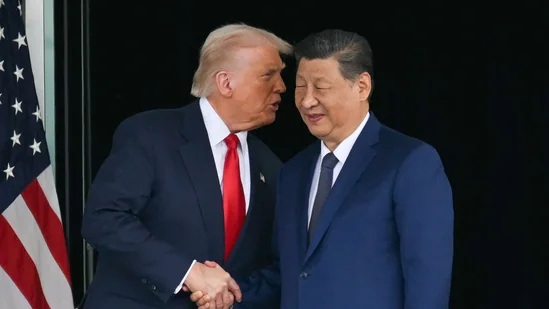Copyright breezyscroll

In a major step toward easing trade tensions, President Donald Trump announced a reduction in tariffs on Chinese goods following his meeting with Chinese President Xi Jinping in South Korea. The move includes cuts to tariffs on Chinese imports and fentanyl-related products, new agricultural commitments from Beijing, and progress on rare-earth cooperation, signaling a thaw in U.S.-China relations and potential ripple effects across global trade and technology. What Did Trump Announce? President Donald Trump has unveiled a sweeping tariff reduction on Chinese imports, marking one of the most significant shifts in U.S.-China trade policy since his return to office. Following what he described as an “amazing meeting” with Chinese President Xi Jinping in South Korea, Trump said the tariff rate on Chinese imports would drop from 57% to 47%, while fentanyl-related tariffs would be halved from 20% to 10%. “We had an incredible meeting. I think this is a big step forward, not just for trade, but for the world,” Trump told reporters after the meeting. The decision signals a strategic easing of tensions between Washington and Beijing, which have long been locked in disputes over tariffs, tech competition, and geopolitical influence. What Did China Agree to in Return? China has pledged to purchase large quantities of American soybeans, a move that could provide a much-needed boost to U.S. farmers still recovering from earlier trade disruptions. In addition, the two countries achieved a breakthrough on rare-earth minerals, a critical area in global supply chains. These materials are essential for manufacturing electronics, batteries, and military technologies, sectors where China has historically held a dominant position. Trump announced a one-year, extendable agreement that ensures China will continue supplying rare earths to the U.S. “There’s no roadblock at all on rare earths,” Trump said. “That will hopefully disappear from our vocabulary for a little while.” This deal could ease pressure on industries reliant on these materials, particularly clean energy, defense, and high-tech manufacturing. Why Is This a Big Deal for Global Trade? The tariff reduction comes at a time when both nations are recalibrating their economic strategies. For the U.S., inflationary concerns and supply chain disruptions have reignited debates about high import tariffs. For China, slowing export growth and a weakened property sector have intensified the need to stabilize trade relations. By lowering tariffs, both sides signal a willingness to reset the tone, potentially paving the way for future cooperation on issues that extend beyond trade. Economists suggest that the move could: Reduce consumer prices on imported goods in the U.S. Ease pressure on American manufacturers reliant on Chinese components. Strengthen agricultural exports, particularly soybeans and corn. Stabilize global supply chains, especially in rare-earth-dependent industries. However, analysts also caution that political uncertainty and unresolved tech disputes could limit the long-term impact. What About Chips, Ukraine, and Other Global Issues? Trump revealed that he and Xi also discussed semiconductors and the war in Ukraine, two of the most sensitive topics in global geopolitics. On chips, Trump said Beijing would be “talking to NVIDIA and others about taking chips,” but clarified that “we’re not talking about Blackwell chips,” referring to NVIDIA’s next-generation AI processors that are currently restricted from export to China. The discussion reflects Washington’s attempt to balance national security with trade normalization. Regarding the Ukraine-Russia conflict, Trump said the issue “came up very strongly,” adding that Xi is “going to help us, and we’re going to work together on Ukraine.” If accurate, such cooperation could mark a diplomatic shift, though experts will likely wait for concrete action before concluding. What Wasn’t Discussed and Why It Matters Interestingly, Taiwan, often the flashpoint in U.S.-China tensions, was not part of the discussion. Trump said the topic “never came up,” signaling a deliberate attempt to keep the meeting focused on economic cooperation rather than geopolitical confrontation. This omission might have been strategic: both leaders appeared keen to frame the meeting as a win-win scenario, avoiding topics that could derail diplomatic progress. What’s Next for U.S.-China Relations? Trump hinted at several “major outcomes” to be revealed soon and confirmed plans to visit China in April, with Xi expected to make a reciprocal visit to the U.S. later in the year. “The meetings have cleared several roadblocks,” Trump said. “We’re looking at a new chapter.” If these visits materialize, they could set the stage for the most cooperative period between Washington and Beijing in nearly a decade, or at least a temporary truce in a long-standing economic rivalry. Still, experts remain divided: some see this as a pragmatic reset, while others view it as a tactical pause before the next phase of competition. Why This Moment Matters Beyond the headlines, the tariff cuts signal a broader realignment of economic diplomacy. As global markets grapple with inflation, supply chain risks, and emerging tech rivalries, U.S.-China engagement remains pivotal. This deal may not end the economic rivalry, but it could mark a shift from confrontation to managed competition, where both nations balance national interests with global stability.



